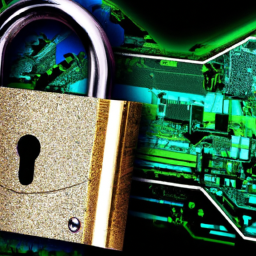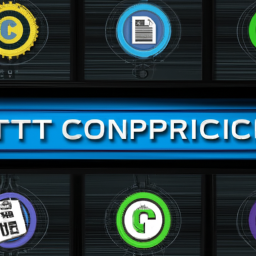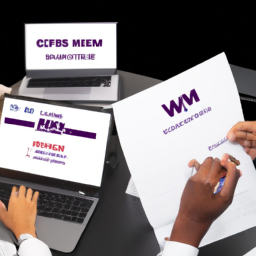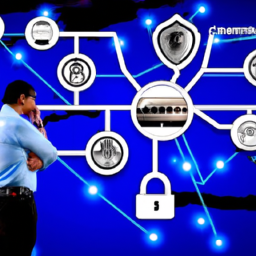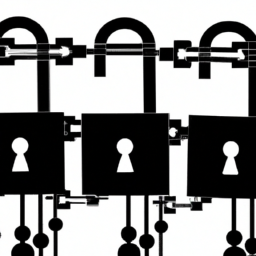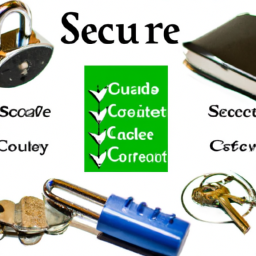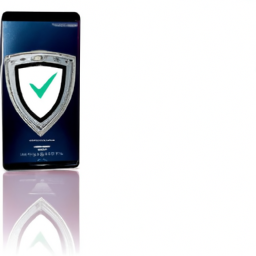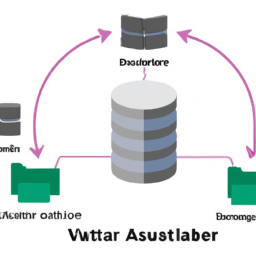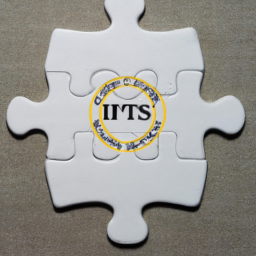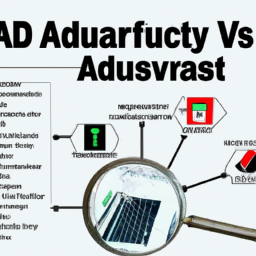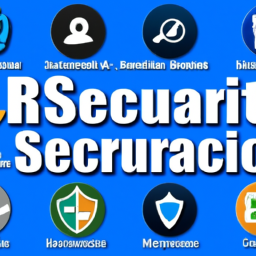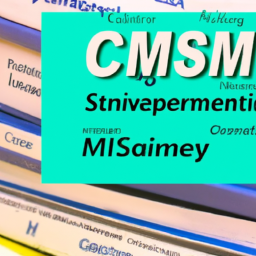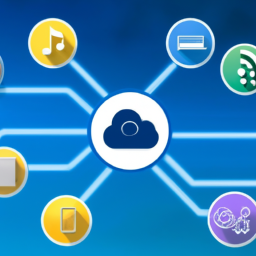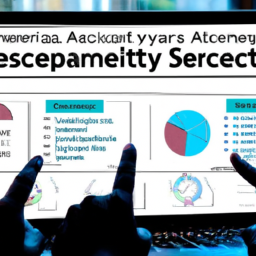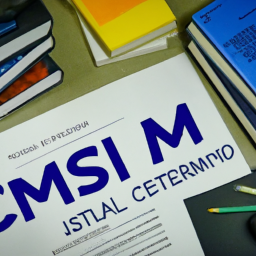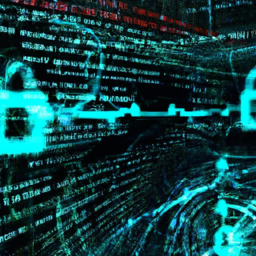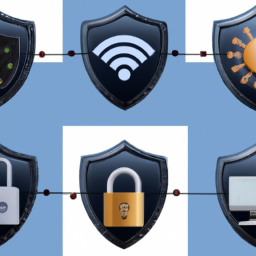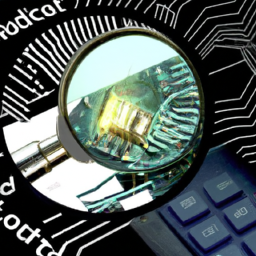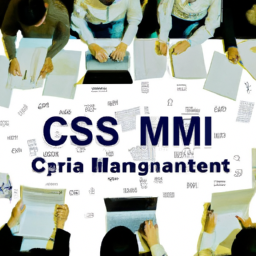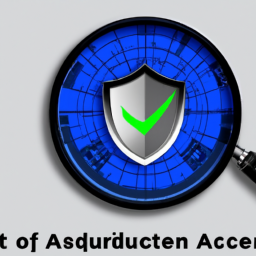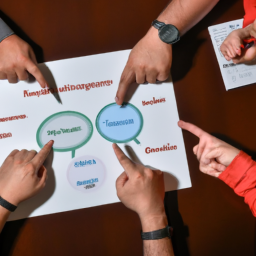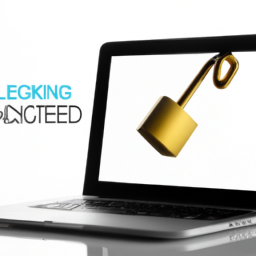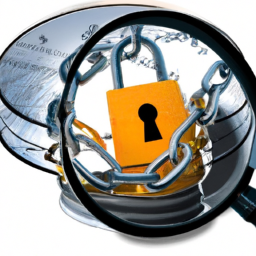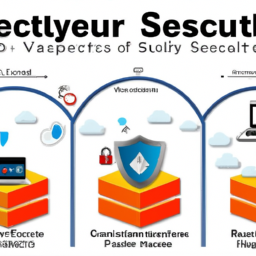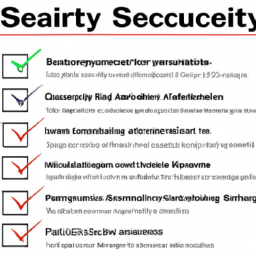Are you concerned about the security of your organization? Do you want to ensure that your systems and data are protected from potential threats? Conducting a successful security management audit is crucial in today’s world, where cyberattacks and security breaches are becoming increasingly common.
By thoroughly assessing security risks, reviewing current protocols, and implementing necessary improvements, you can safeguard your organization’s valuable assets.
Imagine this scenario: a large multinational corporation recently fell victim to a major data breach, resulting in the compromise of sensitive customer information. This incident not only caused significant financial losses but also irreparable damage to the company’s reputation. To avoid such devastating consequences, it is essential to proactively identify vulnerabilities and weaknesses in your security infrastructure.
In this article, we will guide you through the process of conducting a comprehensive security management audit. From developing an audit plan to analyzing findings and identifying gaps, we will provide you with a step-by-step approach to ensure the effectiveness of your security measures.
So, let’s dive in and take control of your organization’s security!
Key Takeaways
- Thoroughly assess security risks through techniques such as vulnerability scanning, penetration testing, and threat modeling.
- Review current security protocols to identify areas for improvement and develop strategies for enhancing safeguards.
- Develop an audit plan by outlining objectives, creating a timeline, and establishing criteria for evaluating security protocols.
- Implement necessary improvements by developing an action plan, monitoring progress, and addressing challenges while staying proactive.
Assessing Security Risks
Assessing security risks is crucial in order to effectively manage and mitigate potential vulnerabilities. Identifying vulnerabilities is the first step in this process. By conducting a thorough analysis of your organization’s systems, infrastructure, and processes, you can identify any weak points or areas that may be susceptible to attacks.
This can be done through various risk assessment techniques, such as vulnerability scanning, penetration testing, and threat modeling. These techniques help you understand the likelihood and potential impact of different security threats.
By identifying vulnerabilities, you can prioritize and allocate resources to address the most critical risks. Once you’ve assessed the security risks, you can then move on to reviewing current security protocols, ensuring that they align with industry best practices and are effective in protecting your organization’s assets and information.
Reviewing Current Security Protocols
Reviewing the current security protocols gives you a clear snapshot of the existing measures in place. It is an essential step in conducting a successful security management audit. By thoroughly examining the protocols, you can identify areas that need improvement and develop strategies for enhancing safeguards.
Look for any gaps or vulnerabilities in the current procedures, and assess their effectiveness in mitigating risks. Pay attention to access controls, authentication methods, and incident response protocols. Analyze the documentation and ensure that it’s up to date and comprehensive.
Consider conducting interviews with key personnel to gather insights and feedback on the protocols. By reviewing the current security protocols, you lay the groundwork for improving procedures and enhancing safeguards, setting the stage for developing an audit plan that addresses any identified weaknesses seamlessly.
Developing an Audit Plan
After carefully examining the existing security protocols, it’s time to devise a plan for the upcoming security audit. This stage is crucial in ensuring a successful audit that identifies weaknesses and assesses risks comprehensively.
Start by outlining the objectives of the audit, including the specific areas to be assessed and the desired outcomes.
Next, develop a detailed timeline, allocating sufficient time for each phase of the audit process. Consider the resources needed, such as personnel and technology, to effectively carry out the plan.
Additionally, establish clear criteria for evaluating the security protocols and determining the level of risk they pose. This will guide the audit team in their assessment and help prioritize areas for improvement.
Finally, ensure that the audit plan is well-communicated to all relevant stakeholders. By completing this step, you can seamlessly transition into the subsequent section about conducting the audit, where the actual assessment takes place.
Conducting the Audit
Once the audit plan is in place, it’s time to dive into the actual assessment and uncover any vulnerabilities or risks. To conduct a successful security management audit, you need to employ effective auditing techniques that will thoroughly evaluate data protection measures.
Start by examining the organization’s security policies and procedures to ensure they align with industry best practices. Assess the effectiveness of access controls, encryption methods, and network security measures.
Analyze the security awareness training provided to employees and evaluate their understanding of data protection protocols. Perform vulnerability scans and penetration tests to identify any weaknesses in the system.
Additionally, review incident response plans and backup procedures to ensure they are comprehensive and up to date. By employing these auditing techniques and thoroughly evaluating data protection measures, you can identify any gaps or vulnerabilities that need to be addressed to enhance the organization’s security posture.
Transitioning to the next section, analyzing findings and identifying gaps, will allow for a comprehensive evaluation of the audit results.
Analyzing Findings and Identifying Gaps
When evaluating the audit results, you need to carefully analyze the findings to identify any areas of improvement and potential vulnerabilities.
It’s crucial to thoroughly examine the data and reports to gain a comprehensive understanding of the security management system’s strengths and weaknesses. By doing so, you can pinpoint specific gaps that need to be addressed and develop effective strategies to enhance the overall security posture of the organization.
Evaluate the audit results
To evaluate the audit results, you should analyze the findings and identify any security vulnerabilities that need to be addressed.
For example, imagine you’re a security manager conducting an audit of a company’s network infrastructure. Upon evaluating the results, you discover that the firewall configuration is outdated and no longer provides adequate protection against cyber threats.
This evaluation allows you to determine the effectiveness of the security measures in place and assess their performance. By analyzing the findings, you can identify areas of improvement and potential vulnerabilities that require immediate attention.
This step is crucial in ensuring that the security management audit is comprehensive and thorough. It enables you to prioritize actions and allocate resources effectively to mitigate risks and enhance the overall security posture of the organization.
Identify areas of improvement and potential vulnerabilities
Now that you’ve evaluated the audit results, it’s crucial to identify areas of improvement and potential vulnerabilities in your security management. By taking a thorough and detail-oriented approach, you can ensure that your organization’s access control is improved and cybersecurity risks are mitigated effectively.
Start by analyzing the weaknesses and gaps identified during the audit. These may include outdated software, weak passwords, or inadequate training programs. Determine the root causes behind these vulnerabilities and develop strategies to address them. This could involve implementing stronger authentication methods, conducting regular vulnerability assessments, and enhancing employee awareness through training and education.
By identifying and addressing these areas of improvement, you can strengthen your security management and protect your organization from potential threats.
In the next section, we’ll explore the steps involved in implementing necessary improvements to your security management.
Implementing Necessary Improvements
First, you need to focus on implementing the necessary improvements to ensure a successful security management audit. To do this, you should start by developing an action plan that outlines the specific improvements that need to be made.
This plan should include clear objectives, timelines, and responsibilities for each improvement. As you implement the improvements, it’s important to monitor progress regularly. This can be done through regular check-ins with the team responsible for implementing the improvements, as well as by tracking key metrics and indicators.
Additionally, it’s important to address any challenges or roadblocks that may arise during the implementation process. By staying proactive and continuously monitoring progress, you can ensure that the necessary improvements are being effectively implemented for a successful security management audit.
Frequently Asked Questions
How can I ensure that my organization’s security management audit is compliant with industry regulations and standards?
To ensure compliance with industry regulations and standards in your organization’s security management audit, tackle the compliance challenges head-on.
Focus on frequent audit frequency to stay on top of any potential issues.
Be thorough and detail-oriented in your analysis, leaving no stone unturned.
By incorporating alliteration, you add depth and complexity to your writing, capturing the reader’s attention from the start.
Stay proactive, addressing compliance concerns promptly and effectively to ensure a successful audit.
What are some common challenges or obstacles that organizations face when conducting a security management audit?
Common challenges and obstacles organizations face in security management audits include a lack of resources and resistance to change.
Without sufficient resources, conducting a thorough audit becomes difficult, as there may not be enough time or personnel to properly assess all areas of security.
Resistance to change can also hinder the audit process, as employees may be reluctant to adopt new security measures or disclose potential vulnerabilities.
Overcoming these challenges requires careful planning, effective communication, and the allocation of adequate resources.
Are there any specific tools or software that can assist in the process of conducting a security management audit?
To assist in the process of conducting a security management audit, there are numerous tools and software available. These resources offer invaluable assistance by streamlining the audit process, ensuring comprehensive coverage, and enhancing efficiency.
From vulnerability scanning tools to security information and event management (SIEM) software, these tools provide the necessary assistance to conduct a thorough and effective security management audit. By leveraging these technologies, organizations can identify vulnerabilities, assess risks, and implement necessary security measures.
What are some best practices for effectively communicating the findings and recommendations of a security management audit to key stakeholders?
To effectively communicate the findings and recommendations of a security management audit to key stakeholders, you should employ effective communication strategies and engage stakeholders throughout the process.
This includes providing clear and concise reports that outline the audit findings, using visual aids to enhance understanding, and conducting presentations or meetings to discuss the results in detail.
By involving stakeholders and addressing their concerns, you can ensure that the audit findings are properly understood and acted upon.
How often should a security management audit be conducted in order to maintain a high level of security within an organization?
To maintain a high level of security within your organization, it’s crucial to conduct security management audits regularly.
The frequency of these audits depends on various factors such as industry standards, regulatory requirements, and the size and complexity of your organization. For example, in the case of a financial institution, conducting a security management audit annually or biennially might be necessary due to the high importance of protecting sensitive financial data and preventing fraud.
Regular audits ensure that security measures are up to date and effective in mitigating risks.
Conclusion
In conclusion, conducting a successful security management audit requires meticulous attention to detail and a comprehensive understanding of potential risks.
By thoroughly assessing security risks, reviewing current protocols, and developing a targeted audit plan, you can ensure that your organization is well-prepared to identify and address any vulnerabilities.
The audit process itself should be conducted with precision, analyzing findings and identifying gaps to create a robust security framework.
Finally, implementing necessary improvements will enhance the overall security posture, creating a harmonious symphony of protection.




